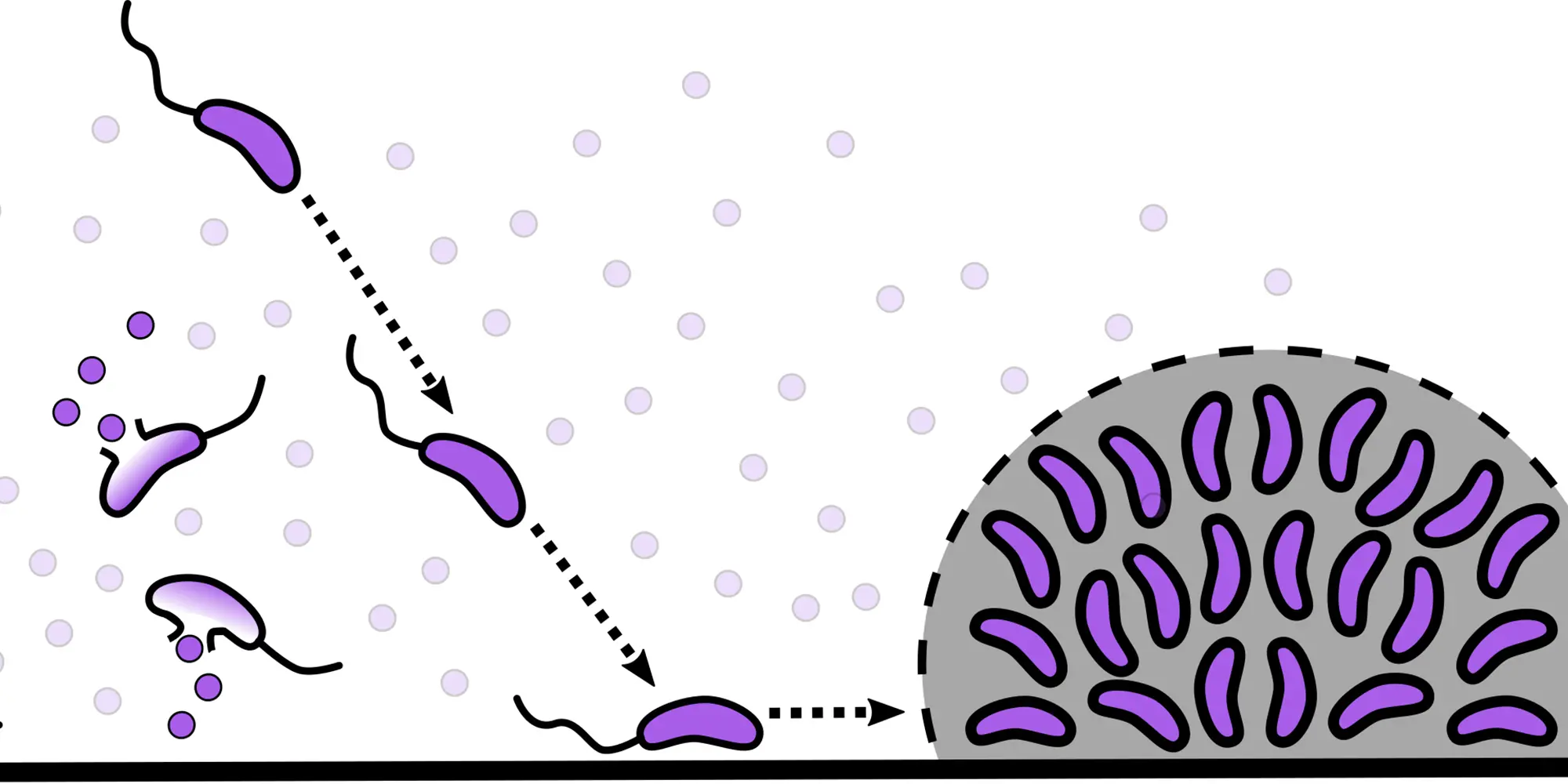
Biologists Determine Bacteria Sense Damage to Relatives
Media Inquiries
Carnegie Mellon University biologists have discovered that Vibrio cholerae, the bacteria behind the cholera disease, can sense when its relatives die. Bacterial cell death is often accompanied by lysis, where the cell explodes, releasing internal cellular components. The researchers found that a small molecule released during cell lysis is detected by living V. cholerae, which drives the survivors to clump together and form large communities, known as biofilms, to protect themselves.
"Our basic finding was that populations of bacteria can alter their collective behaviors when they sense the deaths of their relatives," said Jojo Prentice, a research associate in the Department of Biological Sciences(opens in new window). "The most interesting aspect of this work is that it provides a mechanistic connection between bacterial lifestyles and the threats they face in the wild — two features of their biology that were well known to independently shape their evolution."
Prentice and Drew Bridges(opens in new window), assistant professor of biological sciences, identified the cell death signal, norspermidine, as well as the receptor, called MbaA, found on V. cholerae cells, this is responsible for sensing the signaling process. When the MbaA receptor detects extracellular norspermidine, the death signal, it drives V. cholerae cells to form biofilms, which protects cells from pervasive environmental threats such as bacteriophages, the viruses that infect bacteria and cause cell death.
This pathway works for V. cholerae and other bacteria in the Vibrio genus, such as V. vulnificus, bacteria that can lead to necrosis and death. Bacteria in the Vibrio genus will form a biofilm if any other bacteria in the same genus are damaged.
"If you saw an injured person, you'd probably try to protect yourself or you'd be on edge, and that's what we see with the bacteria," Bridges said. "They have the ability to sense internal components of their kin, and if they sense it, they respond by preparing themselves for an encounter with a threat."
"This is such a simple mechanism that could be fundamental," Bridges said. "We want to explore what other bacteria also do this. In addition, we really want to know what else is regulated by these receptors other than just biofilm formation. Are there any other sorts of bacterial immunity factors that are regulated by this cell lysis?"
Bridges plans on investigating similar cellular mechanisms in his future directions, and his lab recently received funding to expand their work and the number of researchers working on it. The Curci Foundation provided Bridges a grant to develop new fluorescent probes that will allow researchers to study biofilms more effectively. A Kaufman Foundation grant also will allow the Bridges Lab to investigate bacterial responses in conditions closer to what bacteria experience in nature.
"I would love to hash out the evolutionary implications of bacterial lifestyle transitions in response to threats in the wild," Prentice said. "If our findings hold any generality, then the adaptive plasticity of bacteria in the face of environmental threats should be a pervasive force driving their evolution."
Prentice and Bridges were joined by Robert van de Weerd on a paper published in Nature Communications entitled, "Cell-Lysis Sensing Drives Biofilm Formation in Vibrio cholerae(opens in new window)." Their work was funded by the National Institutes of Health and the Damon Runyon Cancer Research Foundation Dale F. Frey Award for Breakthrough Scientists.


